Page 3 out of 27 results
Sort by
Newest Principles of Development summaries
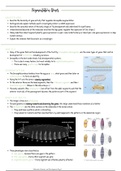
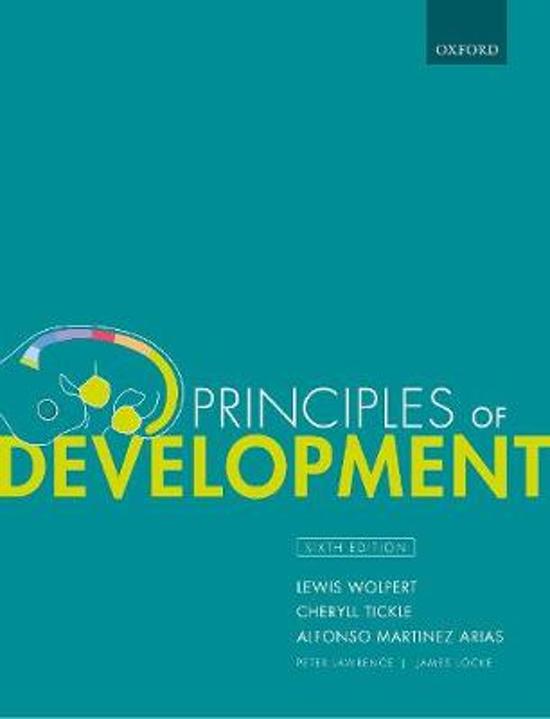
-
1. Segmentation Genes
- Lecture notes • 7 pages • 2020
-
- £3.49
- + learn more
-Describe the hierarchy of gene activity that regulates Drosophila segmentation -Distinguish and explain methods used to investigate protein vs mRNA expression -Describe the syncytial nature of the early stages of fly development and understand its significance. -Understand and describe at the molecular level how the Gap genes regulate the expression of Eve stripe 2 -Make predictions about segment polarity gene expression in a pair-rule mutant embryo or about pair-rule gene expression in a Gap m...
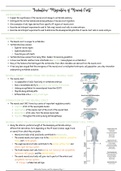

-
7. Induction Migration of Neural Crest
- Lecture notes • 7 pages • 2020
-
- £3.49
- + learn more
- Explain the significance of the neural crest lineage to vertebrate anatomy. - Distinguish the ventral-lateral and dorsal pathways of neural crest migration. - Give examples of cell types derived from specific AP regions of neural crest. - Describe and interpret experiments used to ‘fate map’ neural crest cells in avian embryos. - Describe and interpret experiments used to determine the developmental potential of neural crest cells in avian embryos.
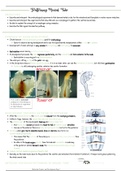

-
5. Patterning Neural Tube
- Lecture notes • 7 pages • 2020
-
- £3.49
- + learn more
-Describe and interpret the embryological experiments that demonstrated a role for the notochord and floorplate in motor neuron induction. -Describe and interpret the experiments that show Shh acts as a morphogen to pattern the ventral neural tube. -Be able to explain the concept of morphogen using examples. -Describe the Shh signal transduction pathway.
Do you also write (revision) notes yourself? Put them up for sale and earn every time your document is purchased.
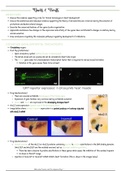

-
9. Backs & Fronts
- Lecture notes • 7 pages • 2020
-
- £3.49
- + learn more
- Discuss the evidence supporting a role for tinman homologues in heart development - Discuss the anatomical and molecular evidence supporting the theory of dorsoventral axis inversion during the evolution of protostome and deuterostome lineages. - Describe the conserved features of Hox gene cluster organisation. - Appreciate and discuss how changes in the expression and activity of Hox genes have contributed to changes in anatomy during animal evolution. - Draw conclusions regarding the molecul...
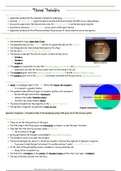

-
3. Neural Induction
- Lecture notes • 6 pages • 2020
-
- £3.49
- + learn more
- Appreciate and describe the molecular mechanisms underlying neural induction - Describe TGF-beta (TGF-β) signal transduction and the differences between the BMP versus nodal pathways - Discuss the experiments that demonstrate a role for BMP antagonists in vertebrate neural induction - Describe how antisense morpholino oligos can be used to inhibit gene function - Appreciate and describe the differences between the processes of neural induction versus neurogenesis
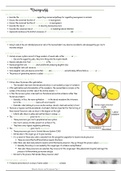

-
4. Neurogenesis
- Lecture notes • 6 pages • 2020
-
- £3.49
- + learn more
- Describe the experimental evidence supporting a conserved pathway for regulating neurogenesis in animals - Discuss the conserved function of proneural genes in neurogenesis - Discuss the conserved function of neurogenic genes in neurogenesis - Describe the role of lateral inhibition in selecting neural precursors - Describe the conserved role of notch-delta signalling in mediating lateral inhibition - Appreciate and discuss the distinct processes of neural induction, neurogenesis and neurulati...
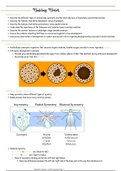

-
8. Building Bodies
- Lecture notes • 7 pages • 2020
-
- £3.49
- + learn more
- Describe the different types of animal body symmetry and the main body axes of bilaterally symmetrical animals. - Describe the features that define diploblasts versus triploblasts. - Describe the features that define protostomes versus deuterostomes. - Understand the importance of the Ediacaran and Cambrian fauna in animal evolution. - Describe the common features of phylotypic stage chordate embryos. - Discuss the evidence indicating that Pax6 is a conserved regulator of eye development. - ...

How did he do that? By selling his revision notes on Stuvia. Try it yourself! Discover all about earning on Stuvia
